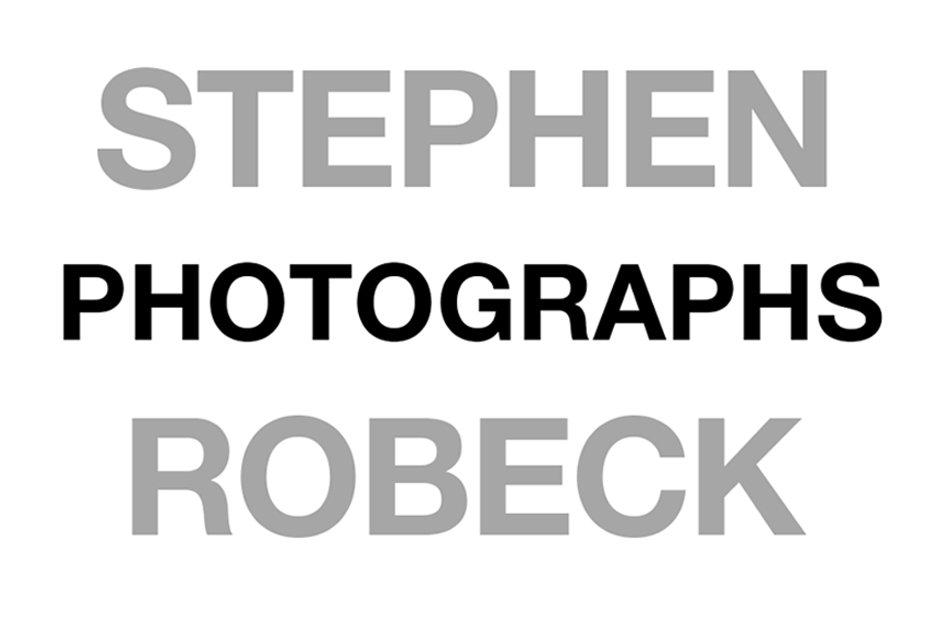What Is Panography?
NOTE: This post was originally part of the "About" section of my website.
Wikipedia says that panography is “a photographic technique in which one picture is assembled from several overlapping photographs.” If you’ve ever seen an image constructed from a bunch of Polaroid photos, this is a classic panograph. I use the term because "panorama" has such a strong association with very wide, narrow views of landscapes and other subjects.
After experimenting for a while with panoramas of various widths and degrees of distortion (like 360-degree views), I began to see that many subjects looked better in a slightly wider view than one frame of film or digital capture. I think this is partly because our peripheral vision is greater horizontally than vertically. Also, it seems to me that horizon lines (whether near or far off) influence how we “take in” a scene: we tend to look more side-to-side than up-and-down. Here’s an example:
This is a nice-enough image of a California live oak on a hot, sunny June day in the Santa Ynez Valley. The main focal point for me was the larger oak in the left foreground. But I had also noticed the dark patch in the right foreground as well as the line dropping from left to right, starting from just above the top of the large tree, so I panned the camera to the right and took another shot. After blending them in Photoshop, here is the result:
I think it’s a much better image this way for several reasons:
- The large oak is still a main focus, but its context is clearer
- The line described above is now complete, adding a graceful gesture
- We can see that the dark patch actually has a shape as well as color
- The small, lone oak on top of the ridge is no longer cut in half and adds a balancing focal point
- The descending ridge line on the right adds perspective to the horizon and sky
- There is more of a form to the array of oaks in the background
- Perhaps most importantly, the more horizontal shape of the image reflects the view which is all about width versus height
See what I mean? Now, I could have just used more of a wide-angle lens and captured the final scene with one shot, but I would have ended up with lots foreground grass and background sky that I probably would have cropped out anyway. This also would have left me with a much smaller file with much lower resolution and, as a result, a smaller maximum print size. In a nutshell, size matters.
To illustrate, consider that a standard 35mm slide or negative (or full-frame digital sensor) is about 1.5 by 1 inch in size. For many years the conventional wisdom was that the largest gallery-quality print that could be made from a 35mm film frame was about 16 by 20 inches. With a large-format camera with 4-by-5-inch film, the same rule-of-thumb would yield a print upwards of 4.5 by 6 feet!
To make the point about resolution clearer, consider the images below, two similar views of Laguna Blanca in Santa Barbara taken on different days and under different light. The one on the left is a crop from a single full-frame digital file showing the full width of the lake, taken with a wide-angle lens. Some of the foreground trees and background sky have been cropped out. The image on the right is a similar view from part of a panograph made with eight vertical full-frame captures taken with a medium-telephoto lens. These eight frames were balanced for tone and color in Lightroom and then seamlessly blended together in Photoshop.Though the light is different and the second image seems a little sharper, they both are presentable.
The next two images below are enlarged details from the two images above. As you compare them you will notice dramatic differences, particularly in tonal clarity and sharpness. As I said, the light is different, but look at the houses, the power-line towers in the hills, detail in the trees and so forth.
Going back to the discussion of film or sensor size above, the single-frame image only has about 50% of the image data in one 35mm frame. The panograph has the equivalent of about six full frames of image data (the full image is wider). The result is twelve times more detail. I’ve sold several prints of the panograph image that are about 60 inches wide and sharp as a tack.
Many of my finished images are panographs of one kind or another. Some are very wide panoramic views, others may be squares, verticals or typical rectangles, but the use of multiple captures in one finished image is a great way to balance creative goals with technical ones.






